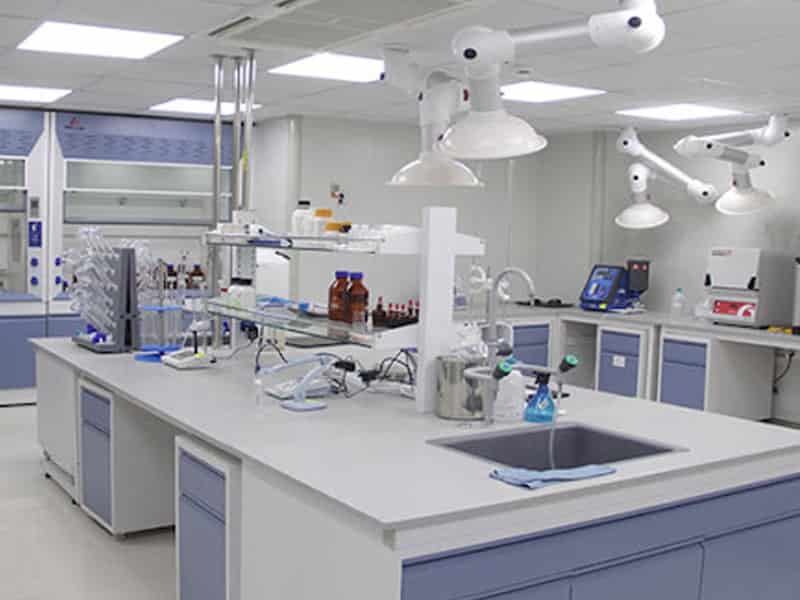Good Laboratory Practices (GLP) Laboratory Setup: A Guide For Research & Clinical Lab
GLP laboratory setup consultants cover the organizational process and conditions under which clinical field studies are conducted, monitored, recorded, and reported. GLP is used to improve data quality for it to be accepted internationally. This assures regulatory authorities that the submitted data is consistent with the results and reliable when making decisions about safety assessments. GLP regulations and guidelines have a significant impact on the operational process for analytical laboratories. GLP is a regulation that deals with the specific organizational structure and documents related to laboratory work to maintain the integrity and confidentiality of the data. When compared to non-GLP operations, the total cost of GLP-based work is about 30% lower.
GLP-based operation requirements
To delegate authority over sponsor management, study management, and quality assurance.
Standard Operating Procedures must be followed at all times.
Instrument calibration and maintenance.
Correct laboratory construction is required to maintain the study's integrity.
To achieve the desired results, raw data must be processed.
Employees must be well-qualified and trained for the job at hand.
GLP MANAGEMENT PROCESS
1. Employees: The number of qualified employees must be sufficient (qualification can include relevant educational background, experience, or training). Aside from that, job descriptions, tasks, and responsibilities must be documented.
2. Facilities: The three main facility requirements are limited access to building rooms, adequate size, and construction. This includes the following responsibilities: The entire research process is monitored. If there is a discrepancy in the process, the study director is replaced. Assuring the availability of the quality assurance unit to handle tests and control articles. Availability of qualified personnel for research.Requirements for animal care facilities.
3. Study Director: The study director is in charge of conducting technical safety studies, analyzing the results, and interpreting, documenting, and reporting the findings.
4. Quality Assurance Unit (QAU): It oversees internal operations. Ensure that the GLP regulations are followed by all facilities, devices, personnel, practices, protocols, records, SOPs, reports, and archives.
5. Equipment: GLP laboratory setup consultants specify equipment requirements such as design, maintenance, records, and other documents.
6. Standard Operating Procedures (SOPs): Standard Operating Procedures (SOPs) define how protocol-specific activities are carried out. Instrument operators are encouraged to write and review SOPs. The operation of SOPs ensures that information is correct and that the document is fit for routine use.
7. Chemical Reagents: QAU will be in charge of the quality, purchasing, and testing of reagents and solutions used in GLP studies.
8. Records Retention and Retrieval: GLP laboratory setup consultants define how records are stored and retrieved.
9. Inspection: The FDA is in charge of inspecting GLP studies before a drug, device, or another product is marketed in the United States. Inspection programs are classified into two types. Routine inspection for-cause Inspection
10. Compliance: Any deviations found by the inspection team are documented and discussed at the exit meeting. Based on the findings discussed during the meeting, the lead inspector prepares an establishment inspection report. A warning letter is sent to the company's management, and corrective action plans are implemented within 14 days.
All non-clinical safety studies require the services of GLP laboratory setup consultants and Regulatory consultants in Canada. GLP can be used in both short-term and long-term studies. Non-clinical safety studies of the drug development process, food control products, and the development of agricultural pesticides and toxic chemicals are all required under this regulation.
In conclusion:
GLP laboratory setup consultants are more familiar with the regulations that govern the non-clinical safety of study items found in pharmaceutical products, cosmetic products, veterinary drugs, devices, and food additives. The goal of testing these items is to learn about their safety in terms of human health and the environment. GLP is also required for all regulatory authorities to register and license pharmaceuticals, pesticides, food additives, veterinary drug products, and some bio-products.
Related Blogs:
Where To Find The Best Technical Writers In Canada?
Importance Quality Management System in the Pharmaceutical
The Leading Regulatory Consultant & CSV Consultants In Canada - GxP Cellators


